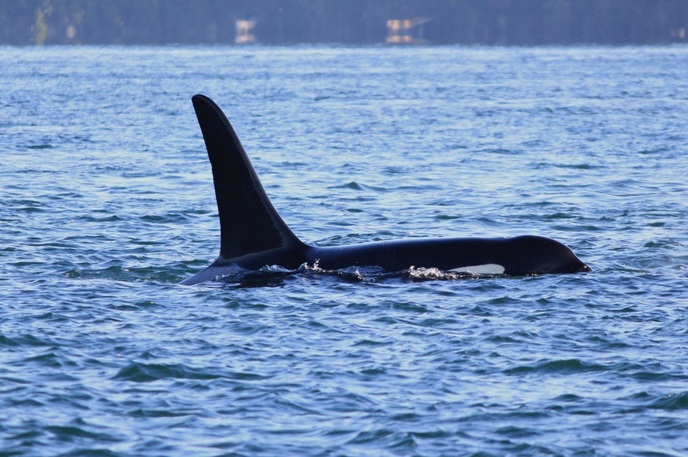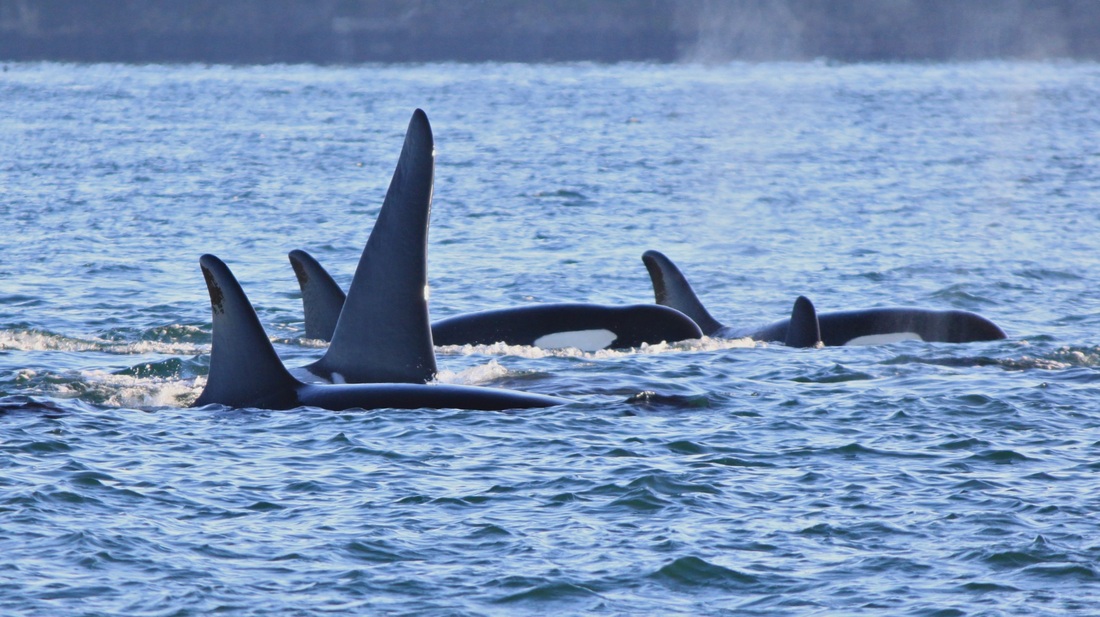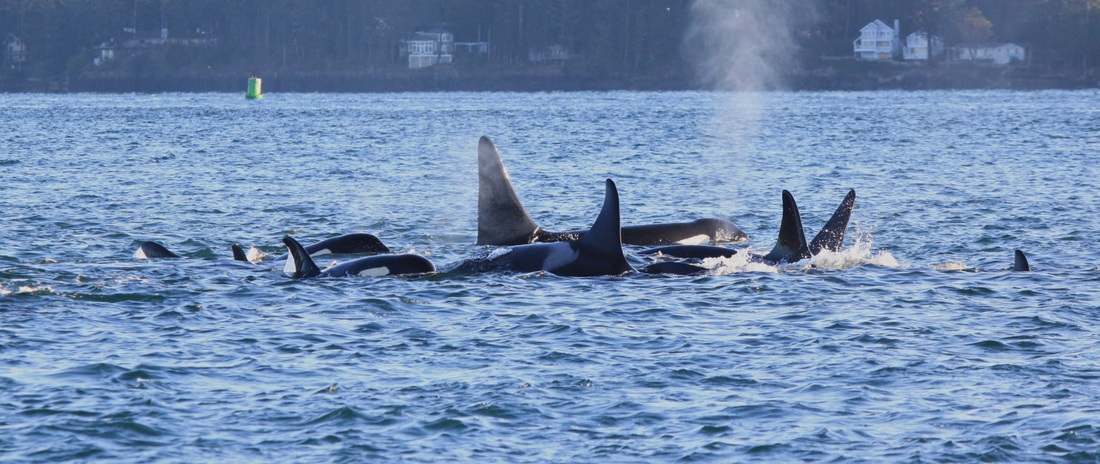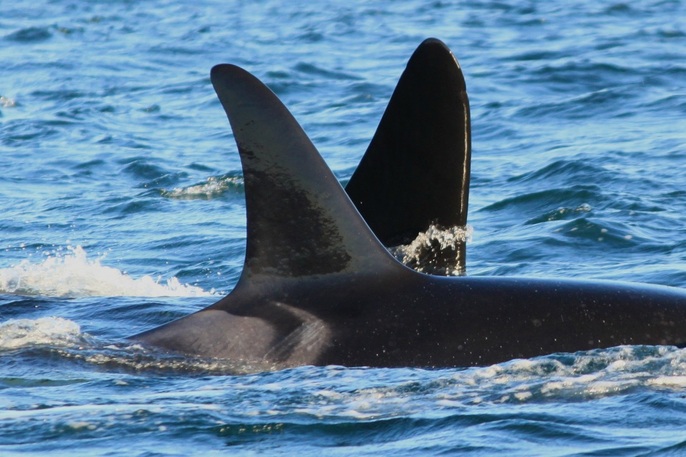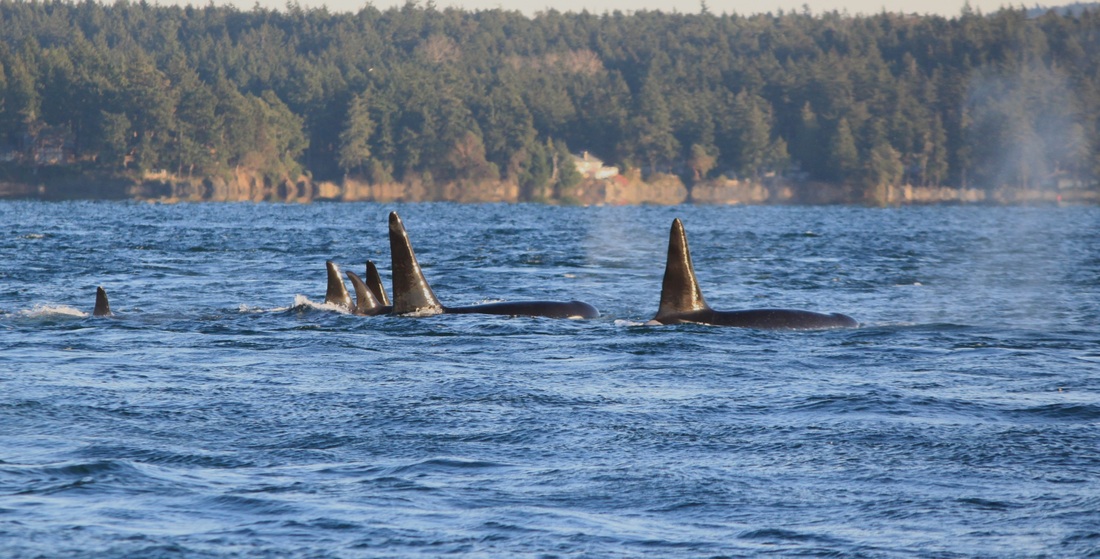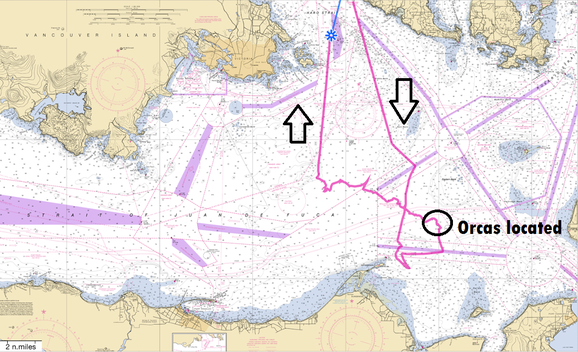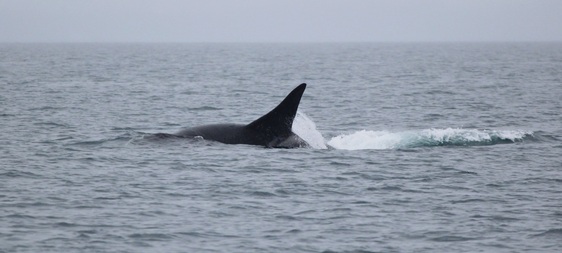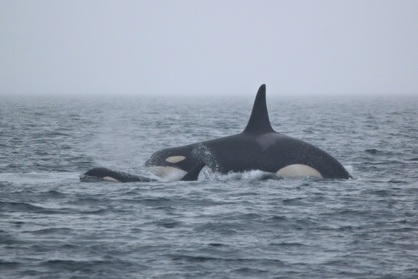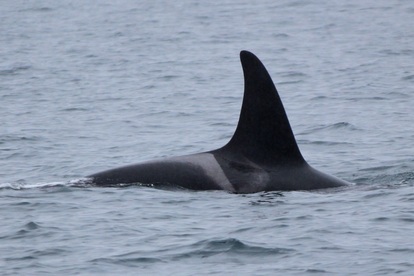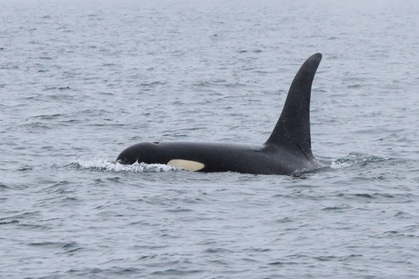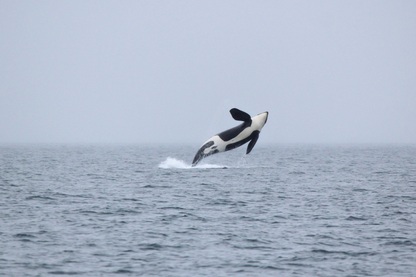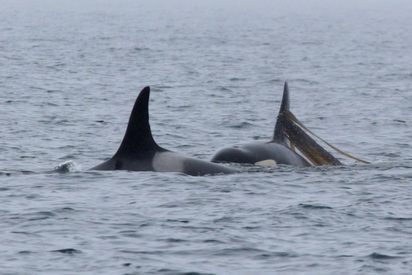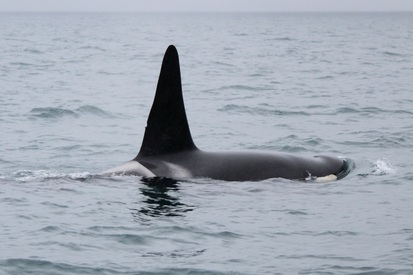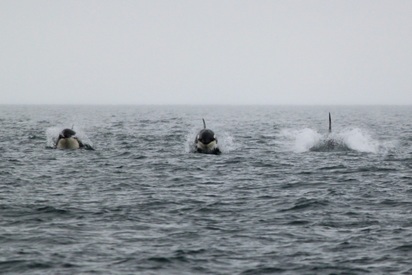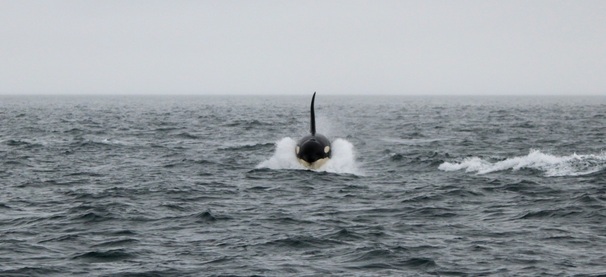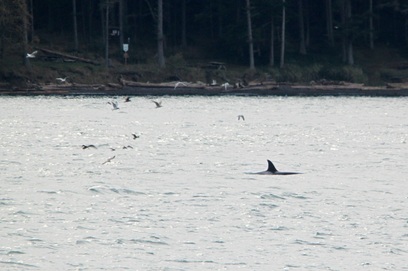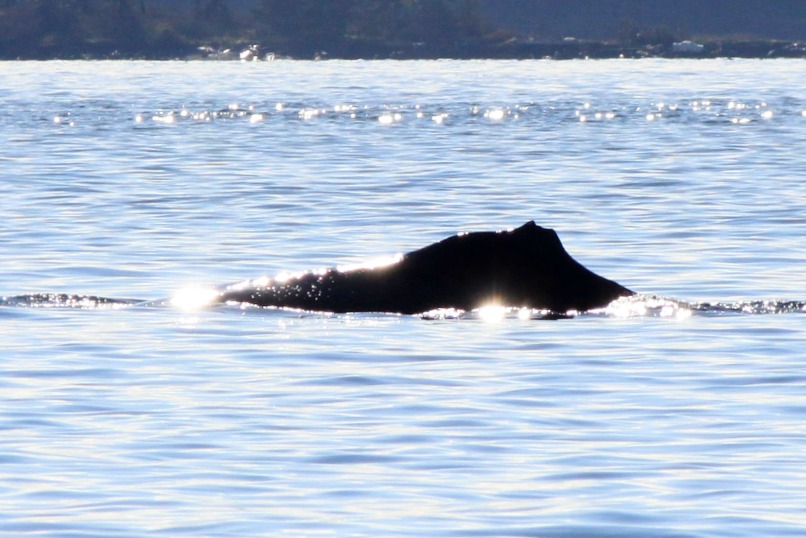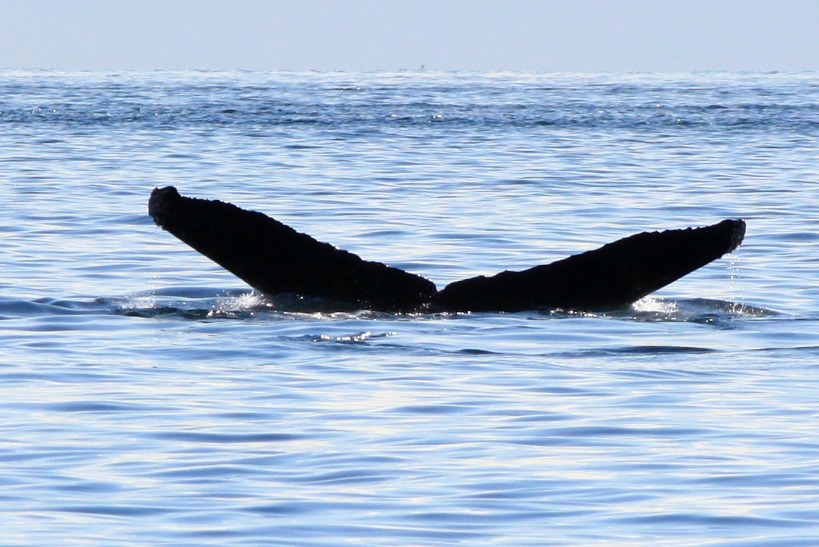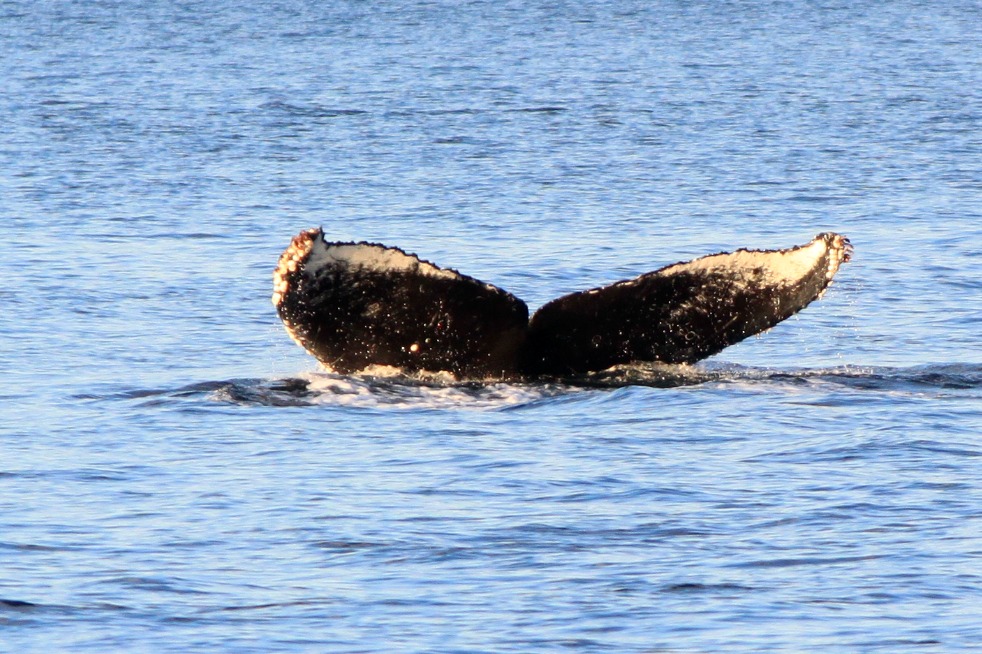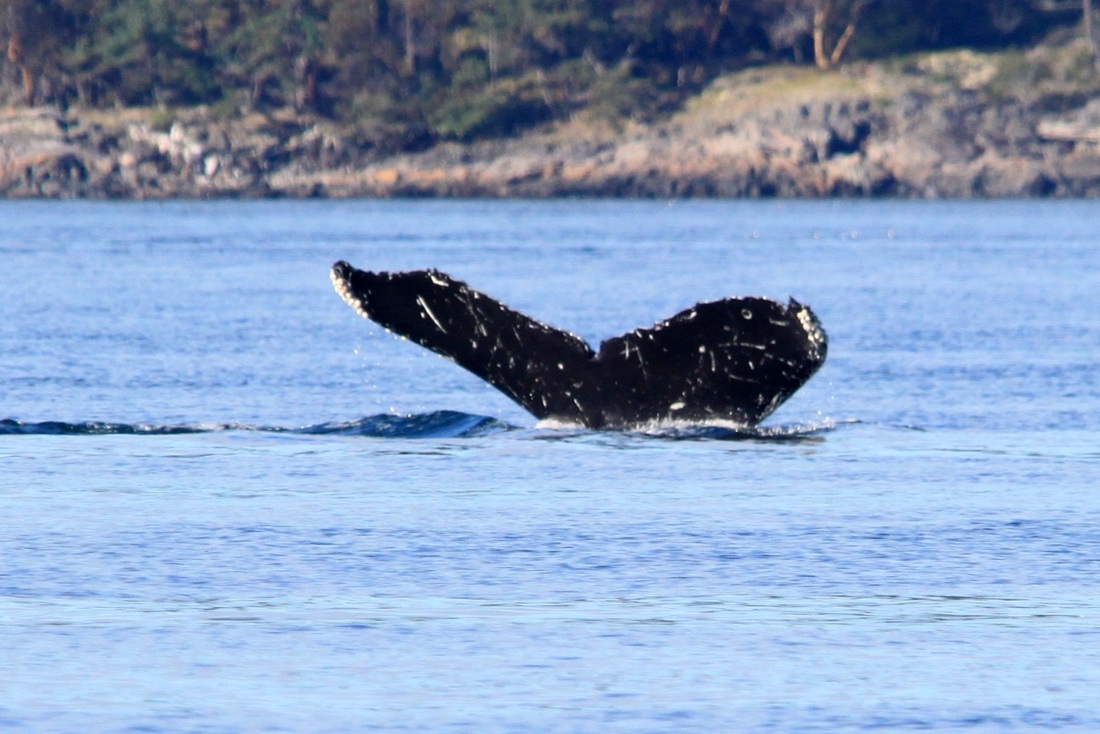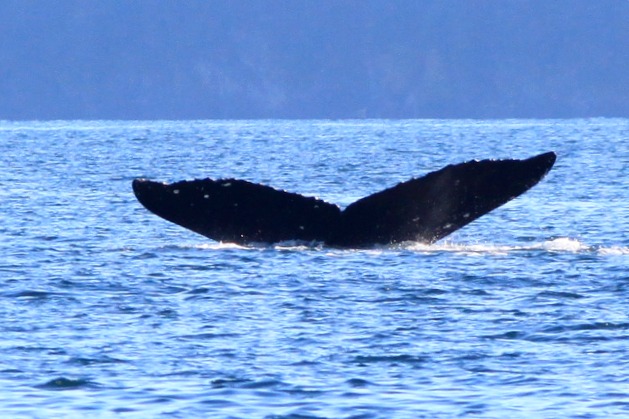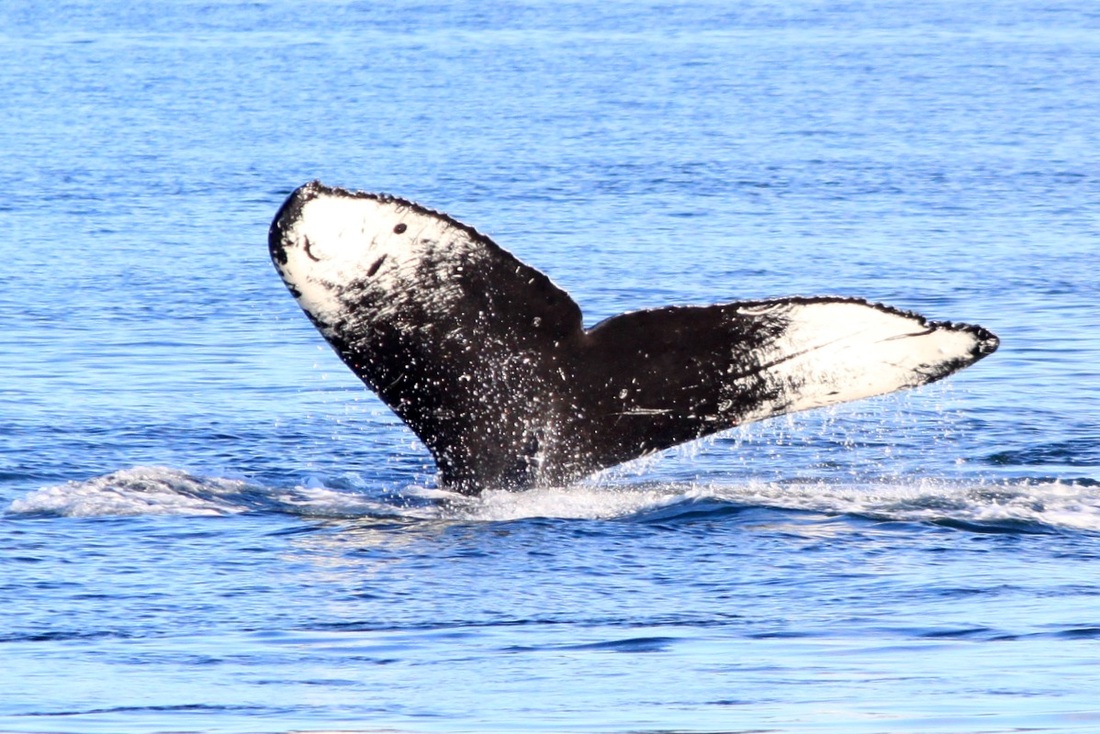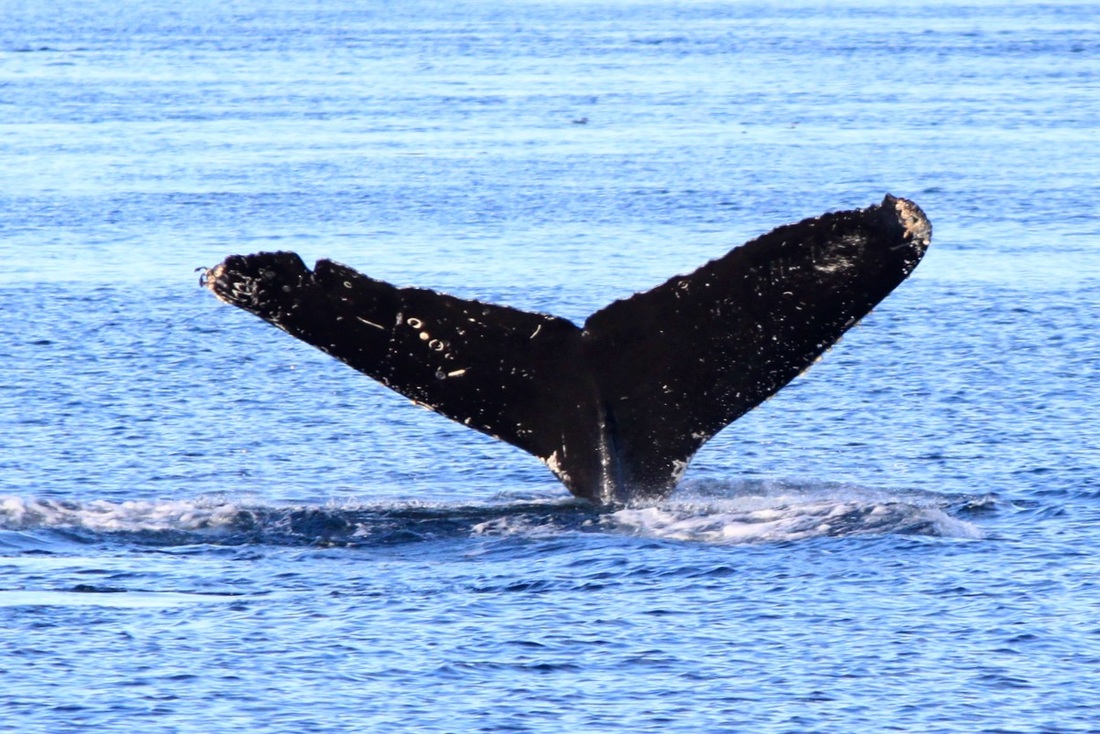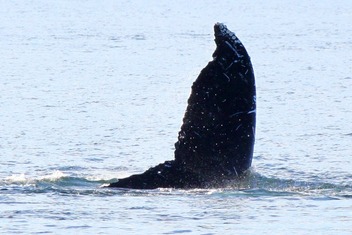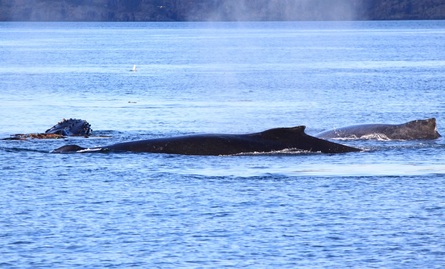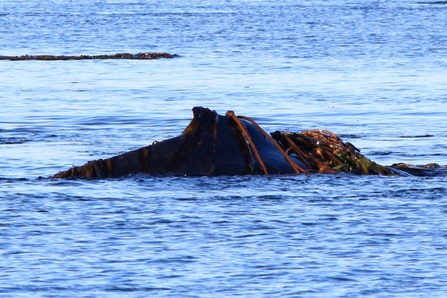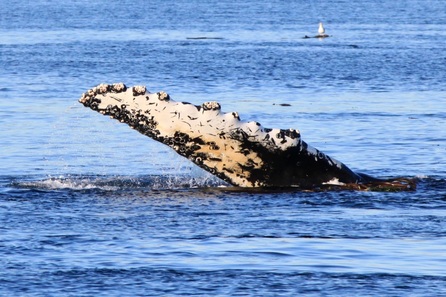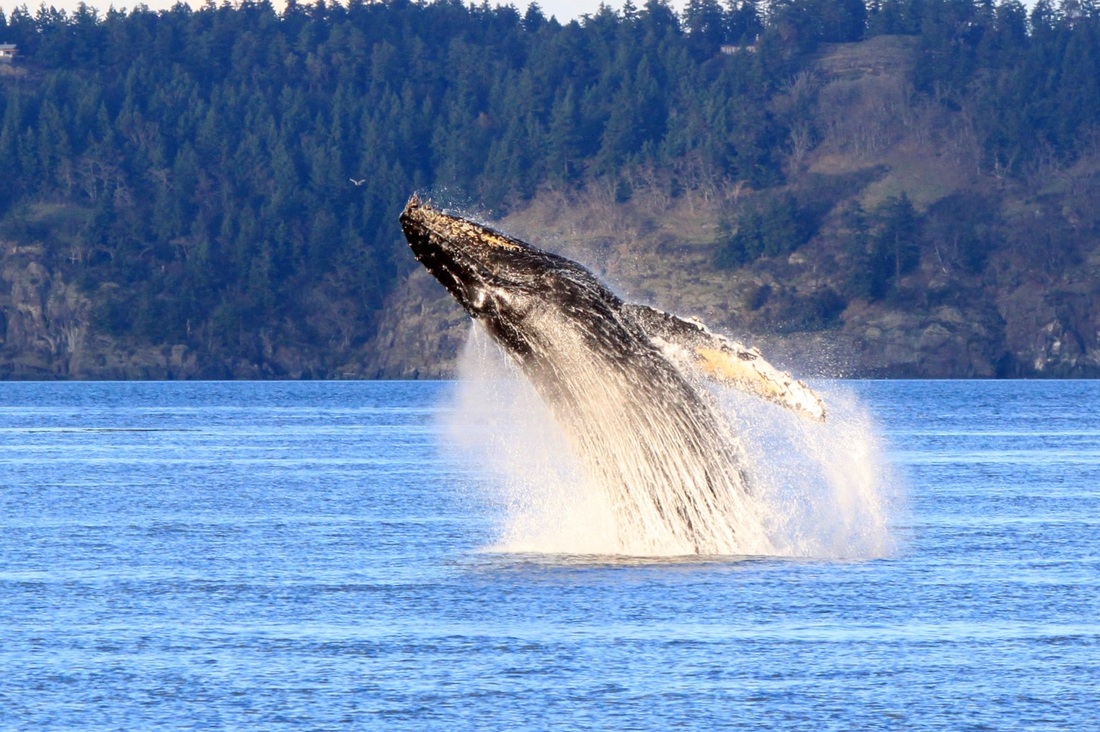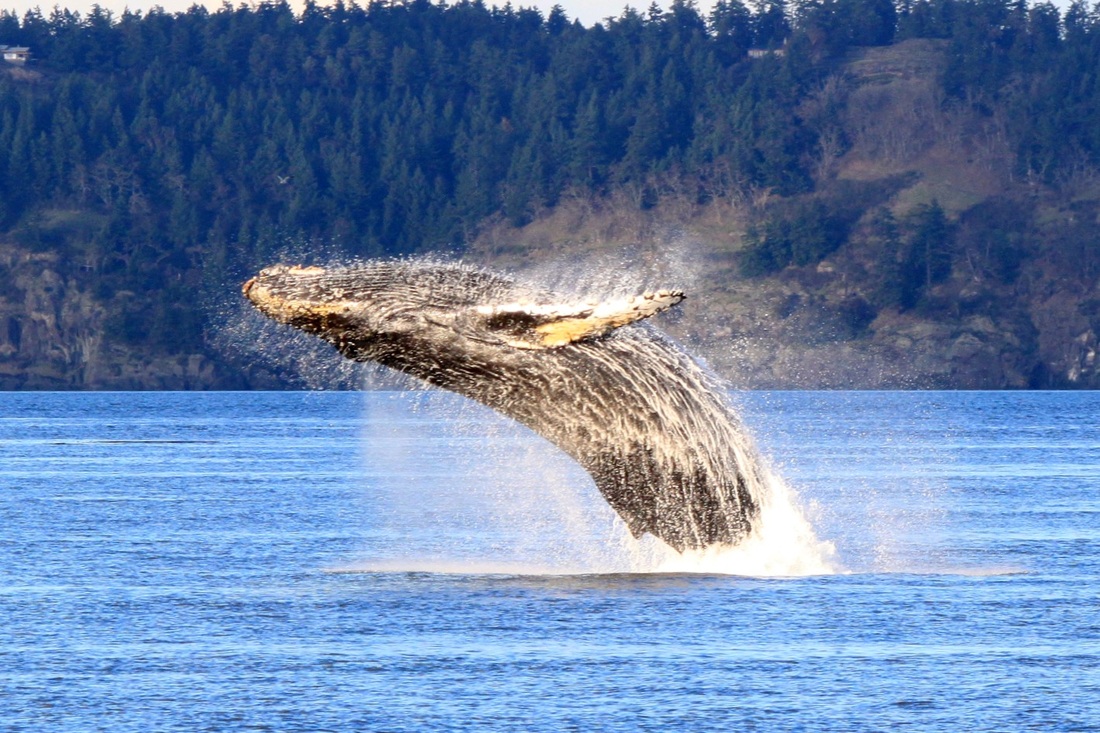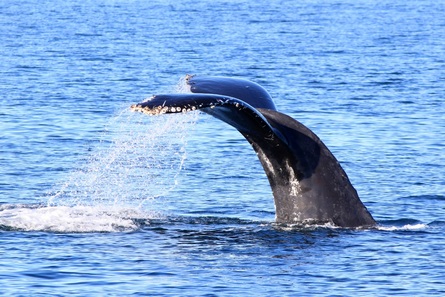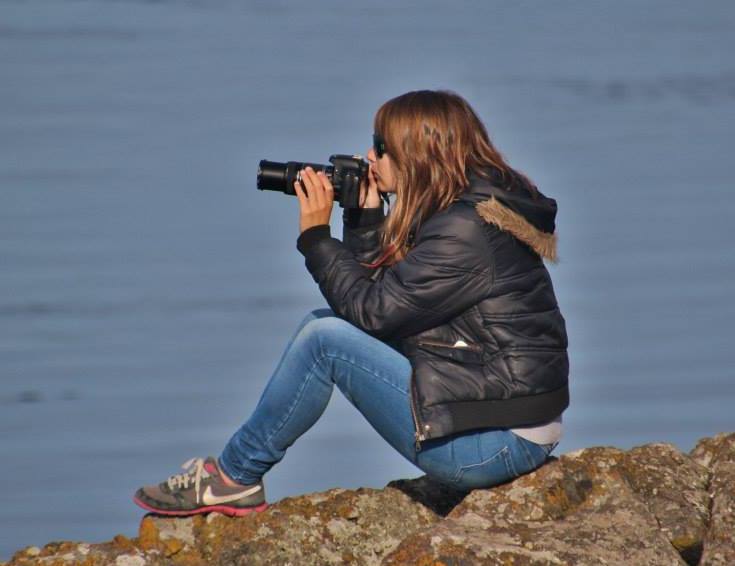We left Snug Harbor on San Juan Island and headed for Spieden Channel. As we exited Spieden Channel and entered San Juan Channel the water became very choppy, due to some wind and tidal exchange. However, through the waves I could see the mist from blows up ahead of us towards Jones Island. We aimed the boat in that direction for awhile but did not see the orcas until one of my friends spotted a group behind us. As I watched the group and clicked my camera away, I was surprised to see that it was a pretty large group and that there were lots of males. Then, we saw more orcas, including even more males, trailing behind our group. This was looking less like Transient orcas and more like Residents. Though multiple Transient orca matrilines can come together and form a superpod, it is not too common. I soon identified the males as Mike J26, Blackberry J27, Doublestuf J34, Cappuccino K21, Scoter K25, Lobo K26, Tika K33, Sonata K35, and Onyx L87. It was J and K pod, not a superpod of Transient orcas! And they were traveling in San Juan Channel and just about to enter Spieden Channel, an occasional path of travel for them, but one I have only seen them take about three times!
The big leading group was made up of all of J pod, the K12's, K16's, and Onyx L87. The trailing group was made up of the K13's and K14's. Once they were in Spieden Channel the leaders stalled and seemed indecisive on where they wanted to go, while the K13's and K14's continued toward Battleship Island, but not without a few spy hops first. After a bit of milling, logging, socializing, and direction changes, the large group decided to also continue through the channel, but aimed in a resting line like fashion for Sentinel Island. Soon after, they split into two groups, one made up of J14's, J16's, J19's, and Onyx L87, while the other consisted of the J11's, J17's, J22's, K12's, and K16's. Once they made it to Sentinel Rock, they regrouped, spy hopped a few times, formed a rough line, and aimed for Battleship Island.
Please don't use my photos without my permission. Just ask :)
Note: This was the last time I saw Rhapsody J32. Her body was found a few days later on December 4th, 2014, near Comox, BC.
